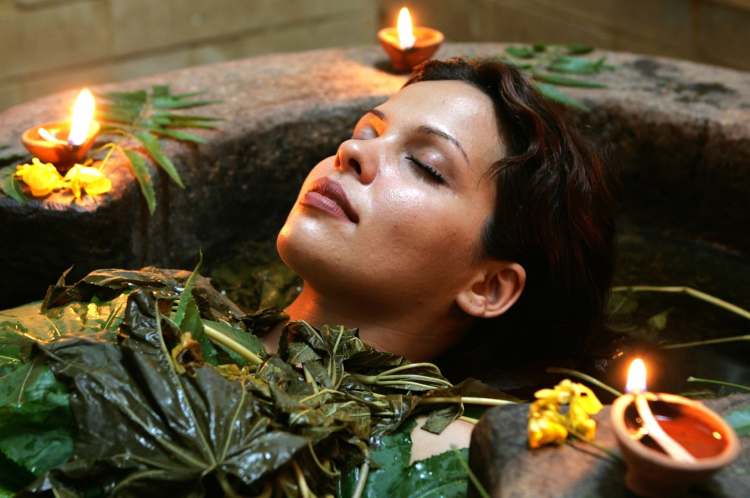
The global pharmaceutical industry is heading toward $2.5 trillion by 2030, fuelled by rigorous research, strong regulation, and global marketing power. Ayurveda, despite its long history and rising international appeal, has not crossed $100 billion in global market size. The issue is structural. Modern pharma built a disciplined ecosystem anchored in evidence, while Ayurveda still relies largely on practice-based knowledge. Yet the opportunity is real. With scientific validation, regulatory alignment, and credible branding, India could build a $500 billion Ayurveda economy, creating millions of skilled jobs and establishing global leadership in natural medicine.
Modern medicine’s success rests on predictable systems — preclinical studies, phased clinical trials, and strict regulatory oversight. Every drug is tested, evaluated, and published in peer-reviewed journals, with approvals from agencies such as the US FDA, the European Medicines Agency, and the WHO. This process builds public confidence.
READ I Time to bridge tradition and innovation in healthcare
The evidence gap and why it matters
Ayurveda did not develop a parallel structure. Most formulations depend on practitioner experience rather than formal research. Global regulators, therefore, classify many Ayurvedic products as supplements, limiting claims and market access. Ayurveda has deep therapeutic value, but without data it lacks credibility in markets where consumers expect rigorous validation.

Ayurveda’s biggest constraint is not efficacy but documentation. Millions rely on Ayurvedic therapies, yet few undergo standardised clinical evaluation. For a global consumer accustomed to labels detailing safety, efficacy, and dosage, anecdotal evidence is not enough. Bridging this gap requires transparent trials, clear data, and global peer review. Once these exist, Ayurveda’s appeal would expand far beyond niche wellness enthusiasts.
The world is shifting toward natural and preventive healthcare. Demand for herbal supplements and plant-based therapies is rising sharply. Yet Western companies capture much of the profit by rebranding Ayurvedic concepts—from turmeric lattes to ashwagandha capsules—without acknowledging their origins. India has lost ground in a space shaped by its own intellectual heritage. A science-backed Ayurvedic ecosystem would allow India to reclaim this market and capture its economic value.
Global regulatory barriers
Scaling Ayurveda globally requires more than clinical proof. It demands alignment with regulatory systems that shape access to major markets. The U.S. classifies most Ayurvedic products under the Dietary Supplement Health and Education Act (DSHEA), limiting therapeutic claims and requiring expensive compliance. The European Union enforces the Traditional Herbal Medicinal Products Directive, which demands 30 years of documented traditional use, including 15 within the EU—restrictions that keep most Indian products out. Many formulations are also caught in the EU’s Novel Food Regulations, which treat long-used herbs as untested substances.
These are effectively non-tariff barriers. India needs a regulatory diplomacy strategy—harmonising standards with Codex Alimentarius, negotiating recognition agreements, and expanding accredited testing capacity. Without this, Ayurveda’s export ambitions will remain aspirational.
Intellectual property and biopiracy
Ayurveda also suffers from weak intellectual property protection. While India created the Traditional Knowledge Digital Library (TKDL) to prevent foreign patents on ancient formulations, it remains a defensive instrument. Global nutraceutical firms continue to extract value by patenting modified Ayurvedic ingredients or repackaging them at premium prices.
India needs a forward-looking IP strategy that enables patents for phytopharmaceuticals, trademarks for proprietary blends, and geographical indications for region-specific herbs. Without stronger IP protection, India will capture only a fraction of the value created from its own heritage.
Building an ayurvedic research framework
India needs a contemporary research model—an Ayurvedic Clinical Research Framework (ACRF)—that combines traditional knowledge with modern science. Standardised formulations are the first step. Institutions such as the Ministry of Ayush, ICMR, and CSIR can develop phytochemical fingerprints, quality norms, and GMP standards.
Ayurvedic formulations must also undergo preclinical and multi-phase clinical trials to establish safety and efficacy. A central digital repository should store research outcomes, trial data, and molecular insights, creating transparency for regulators and researchers. Tools such as AI, genomics, and molecular modelling can help personalise Ayurvedic treatments, aligning them with global trends in precision medicine.
Global research collaborations with universities such as Harvard, Stanford, or Imperial College would add credibility and open the door to approvals from agencies like the FDA and EMA.
Supply chain quality: The weakest link
Even with scientific proof, Ayurveda’s global credibility will rest on its supply-chain standards. India faces well-documented challenges of adulteration, inconsistent phytochemical content, and pesticide residues. Climate variability has further disrupted the availability of medicinal plants. These gaps undermine the replicability of clinical trials and the reliability of finished products. India must adopt Good Agricultural and Collection Practices (GACP), enforce third-party certification, and implement digital traceability from farm to shelf. Without clean supply chains, the most sophisticated R&D framework will not give Ayurveda global reach.
A strong research ecosystem can unlock a multi-layered job market. Opportunities will expand in clinical research, data science, pharmacology, GMP-certified manufacturing, and Ayurveda-focused health services. New universities and digital training platforms would meet rising global demand for Ayurvedic knowledge. A USD 500 billion global market by 2035 could push India’s export share above 40% and create over five million skilled jobs across healthcare and biotechnology.
To move into mainstream healthcare, Ayurveda must be covered by insurance. Major markets function on reimbursement codes that determine treatment access. Traditional Chinese Medicine made global inroads only after it was integrated into national insurance systems and hospital networks. Ayurveda has no comparable pathway today. India must engage insurers, clinical networks, and health-technology assessment bodies to establish evidence-backed treatment protocols. Insurance coverage is more than a financial mechanism; it signals legitimacy and enables Ayurveda to operate within formal healthcare systems worldwide.
Role of government and industry
India now needs a national mission—an “Ayurveda 2030” initiative—that anchors research funding, export strategies, and global regulatory alignment. A National Ayurveda Research Authority (NARA) should oversee clinical trials. Tax incentives can support R&D and validated exports. Academic reforms must deepen the scientific content in Ayurvedic education, integrating pharmacology, digital health, and molecular biology.
Coordinated action across ministries, regulators, universities, and industry will determine whether Ayurveda becomes a global medical system or remains a cultural symbol.
Scientific validation must be matched with modern branding. Ayurvedic companies need stronger global presence through digital platforms, clinical centres abroad, and AI-led personalised wellness services. Partnerships with global influencers, wellness platforms, and universities can reshape Ayurveda’s international image. Tradition supported by data, and authenticity backed by evidence, can position Ayurveda as the world’s leading natural medicine system.
Ayurveda’s strength lies in its holistic approach, but belief alone cannot carry it into global healthcare. The next phase of its evolution will depend on scientific evidence, credible regulation, and modern branding. India has the research capacity, market opportunity, and scientific talent to build a USD 500 billion global Ayurveda ecosystem. If India modernises its research infrastructure and integrates Ayurveda with global regulatory and insurance systems, the world’s oldest medical science could drive the next wave of natural healthcare innovation.
